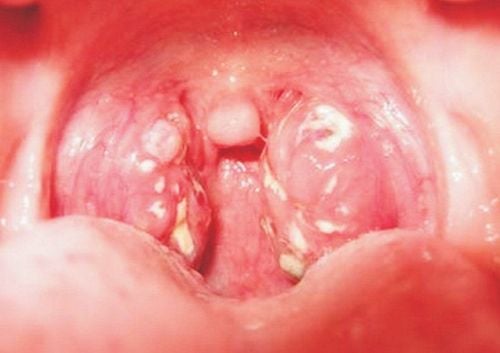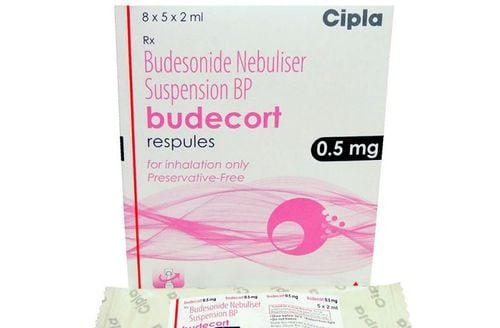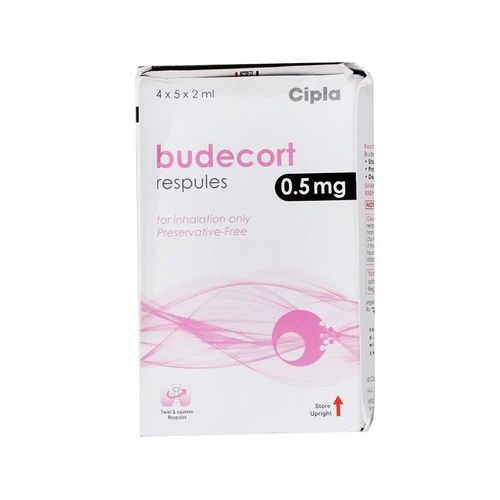This is an automatically translated article.
Posted by Specialist Doctor II Pham Thi Van Hanh - Pediatric Center - Vinmec Times City International Hospital
Diphtheria is transmitted through the respiratory tract (from the end of the incubation period), by contact with respiratory secretions or small droplets released into the air, transmitted through utensils, clothing, toys, food sticky secretions. This is a very dangerous disease, easy to spread into epidemics, if not treated promptly, can cause death.
1. Definition of diphtheria
Diphtheria is an acute infectious disease caused by the bacterium Corynebacterium diphtheria (family Corynebacteriaceae), which damages mainly the pseudomembranous membranes of the tonsils, pharynx, and larynx. , nose. Rarely causes damage to the skin, other mucous membranes (conjunctiva of the eyes, genitals) and toxicity due to exotoxins causing local cellular damage and severe systemic damage to the myocardium, nerves Peripheral, renal and adrenalPatients and healthy carriers are the sole source of the disease. The disease is transmitted through the respiratory tract (from the end of the incubation period), by contact with respiratory secretions or small secretions that are released into the air, transmitted through contaminated utensils, clothes, toys, and food. details. The disease causes epidemics in developing countries, with low living conditions, poor sanitation, and low vaccination rates. It was the leading cause of death among children in the pre-vaccine era.
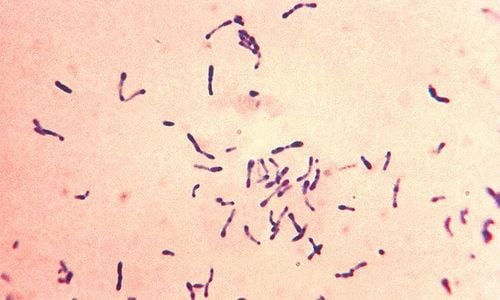
Vi khuẩn Corynebacterium diphtheria gây ra bệnh bạch hầu
2. Diphtheria etiology
C. Diphtheriae is a rod-shaped, slightly curved, Gram (+), aerobic, non-spore-forming bacillus, stable in the outdoors, in low light conditions can live for 6 months, white bacteria The pharynx is sensitive to highly toxic heat and sunlight. C. Diphtheriae has the ability to secrete exotoxins that cause severe toxicity.
Diphtheria bacteria have 4 biological types: Mitis, Gravis, Belfanti and Intermedius, differing in morphology, ability to cause hemolysis, fermentation, toxin production and toxicity.
3. Pathogenesis
Bacilli enter the body through the respiratory tract, skin, genital mucosa, eye conjunctiva, urinary tract, causing local inflammatory lesions. From here the bacteria secrete exotoxins through the blood and lymph to cause serious complications. Diphtheria toxin, when entering cells, will prevent protein synthesis and cause tissue necrosis. Within a few days of infiltration of the respiratory tract, pseudomembranous formations (VKBH, epithelial cells, fibrin, leukocytes and red blood cells) are formed. The pseudo-membrane adheres tightly, when peeled, causes bleeding, spreads downward, narrowing and obstructing, causing difficulty breathing in the larynx. When entering the blood, the toxin causes necrosis of the renal tubules, liver parenchyma, myocardial degeneration, thrombocytopenia, myelin degeneration, and damage to the anterior and posterior horns of the spinal cord. Myocardial and neurological damage usually occurs 2 to 10 weeks after initial infection due to tissue necrosis (possibly with immune-mediated mechanisms)
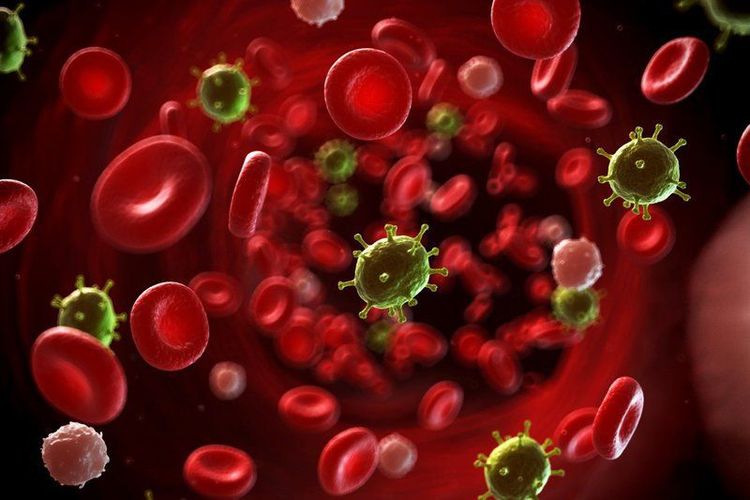
Ngoại độc tố theo máu và bạch huyết vào tế bào gây ra các biến chứng nặng
On the myocardium, the toxin degrades carnitine and reduces the oxidation of long-chain fatty acids. As a result, the accumulation of triglycerides causes fat degeneration in cardiac muscle cells. Using antitoxin can only neutralize when the toxin is still circulating in the blood or when it has just attached to the cell membrane without entering the cytoplasm.
4. Pathology
Bacteria grow in the upper part of the mucosa, the last stage penetrates deep into the lymphatic system and veins. Rarely causes sepsis, endocarditis. In the throat, bacteria secrete exotoxins that cause toxicity in the heart, kidneys, nerves... Injury to the throat, vocal cords, gas, and bronchi is the most toxic state.
Pseudomembranous: Necrotic epidermal cells, phagocytosis, fibrin and bacteria, surrounding the pseudomembranous membrane are inflammatory tissues, tending to adhere deeply to the underlying tissue layer, so when peeling is easy to bleed. Very often causes submandibular and adjacent lymphadenitis.
Heart: Myocarditis : Enlarged heart, flaccid myocardium, rarely with embolism. Microscopic: enlarged myocardium, hyaline degeneration, granular degeneration, lumpy damage to each area, diffuse in myocardium. Inflammatory cell infiltrates in the interstitium, causing scar tissue in many places in the myocardium.
The peripheral nerves are demyelinated, the medulla is lost, the anterior and posterior horns of the spinal cord are damaged, causing damage to the motor system (more than sensation). May cause cerebral hemorrhage, encephalitis, meningitis (rare).

Vi khuẩn làm thoái hóa các dây thần kinh và tổn thương hệ vận động
Others: Kidney damage (interstitial edema), hepatocellular necrosis. Bronchobronchial superinfection, adrenal hemorrhage in patches, skin lesions, endocarditis
Cause of death: Due to pseudomembranous, edematous airway obstruction or toxin causing myocardial damage, systemic nervous, adrenal...
5. Epidemiology
Diphtheria was described by Hippocrates in the 5th century BC. A number of documents have stated about diphtheria epidemics in ancient Syria and Egypt. Diphtheria is endemic in all parts of the world and has caused serious epidemics causing mass death, especially in children, when there was no vaccine. In the 17th century, the disease that plagued Europe, was called hangman (El garatillo - Spain), "throat disease - Italy". In 1735, there was an epidemic in America. Pathogenic bacteria were discovered around 1883 - 1884 and antitoxin was invented at the end of 19th century. Although there is a vaccine, diphtheria bacteria still cause illness and death in places where there is no vaccine. fully immunized. (1966, 1973 in the United States, Canada). The incidence is now clearly reduced thanks to the expanded vaccination for disease prevention. Mortality rate from 5-7%, in some places up to 20% (WHO)
In Vietnam: When there was no vaccine, the disease caused epidemics in all provinces. Since 1984, the incidence has decreased significantly (1985. infection rate was 3.95/100,000 population, in 2000 it was 0.14/100,000 population). Since 2012. Vietnam has controlled the diphtheria incidence to < 0.01/100,000 population. Often spreads or creates small clusters of disease in areas with low vaccination rates. The rate of 5-in-1 vaccination among children <5 years old in our country is over 90%. However, in many places, this rate is still low, the diphtheria vaccine for adults is only available in the immunization service, so there is a limitation that leads to low protection in this community
In 2019 there are some cases cases of diphtheria in the Central Highlands. In June 2020, the disease appeared in Dak Nong, Gia Lai, Dak Lak, Ho Chi Minh City, and is still spreading to some neighboring provinces. Vaccination rate in the Central Highlands is currently 48-52%.. (Rate of complete vaccination/infection rate is 6%.)

Tỷ lệ tiêm vắc-xin phòng bạch hầu cho trẻ nhỏ ở nhiều nơi vẫn còn thấp
Bacterial reservoir: Patients and healthy people carry bacteria (from onset to after 2 weeks). Healthy people who carry the bacteria after a few days to 3, 4 weeks still transmit the disease.
Target audience: Children 1 to 9 years old, high incidence in unvaccinated children and adults, areas with low vaccination rates, crowded living conditions, unsanitary conditions and anyone traveling to the area translation is in progress.
Path of transmission: (droplet) + (contact), transmitted through respiratory droplets when coughing, talking, touching toys or objects, penetrating through the skin causing diphtheria skin
Prevalence of diphtheria A second episode is rare, although up to 10% of people after diphtheria remain SCHICK positive.
Currently, Vinmec International General Hospital offers a variety of diphtheria vaccination services for children and adults with 5 combinations, including:
Infanrix Hexa's 6-in-1 vaccine GSK (Belgium) Sanofi's Hexaxim 6-in-1 vaccine (France) Sanofi's (France) Sanofi's 5-in-1 Pentaxim vaccine Adacel 0.5 ml Sanofi - France Tetraxim 0.5 ml Sanofi - France To ensure efficacy Immunization results and safety, before injection, customers will be examined by specialist doctors, fully screened for physical and health problems, advised on preventive vaccines and injection regimens, How to monitor and take care after vaccination before giving the indication for vaccination according to the latest recommendations of the Ministry of Health & World Health Organization.
Please dial HOTLINE for more information or register for an appointment HERE. Download MyVinmec app to make appointments faster and to manage your bookings easily.




